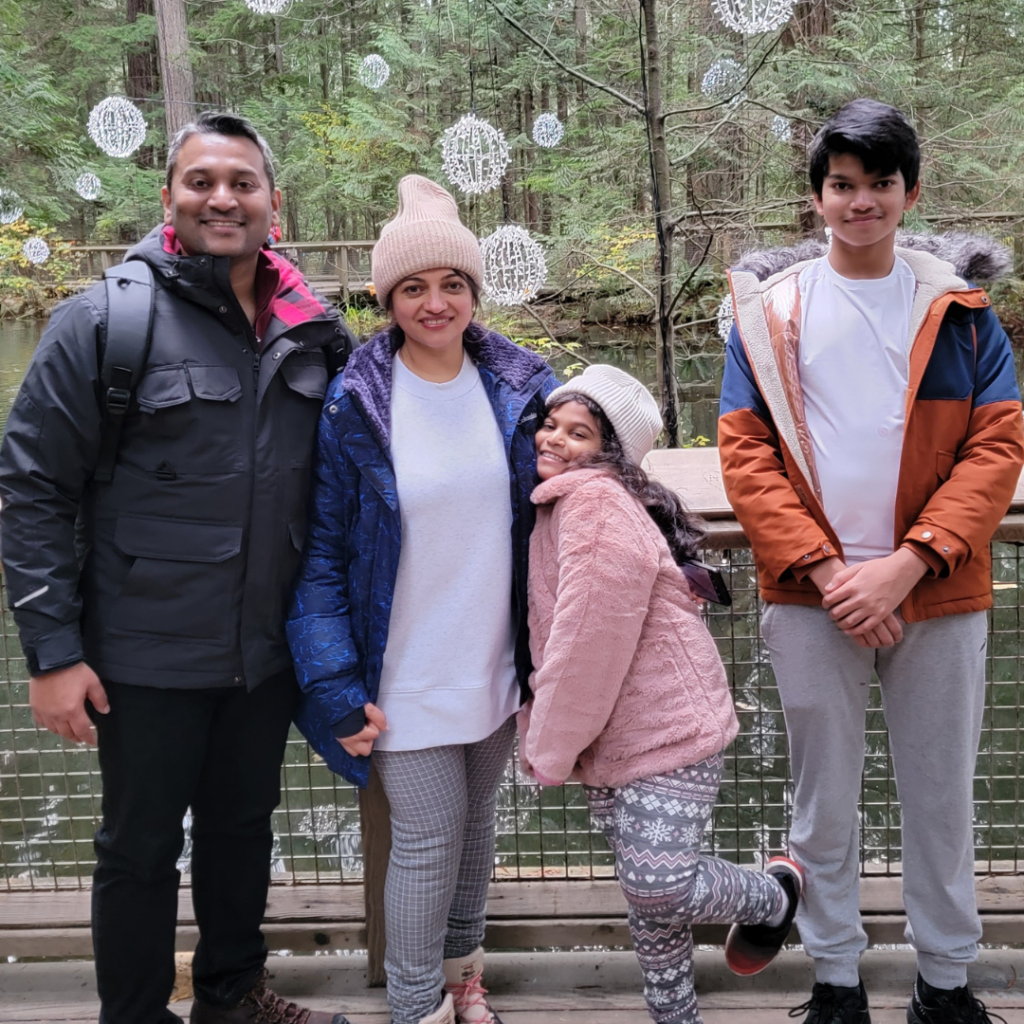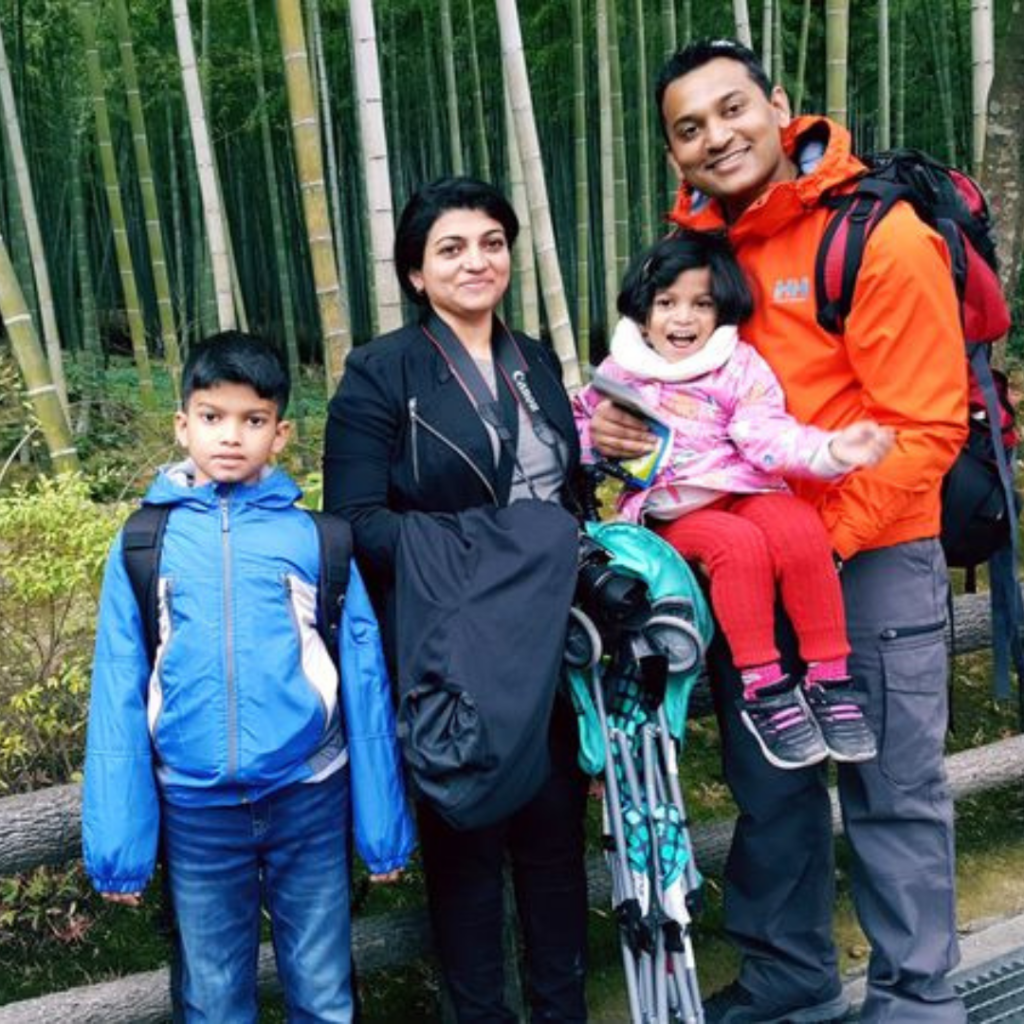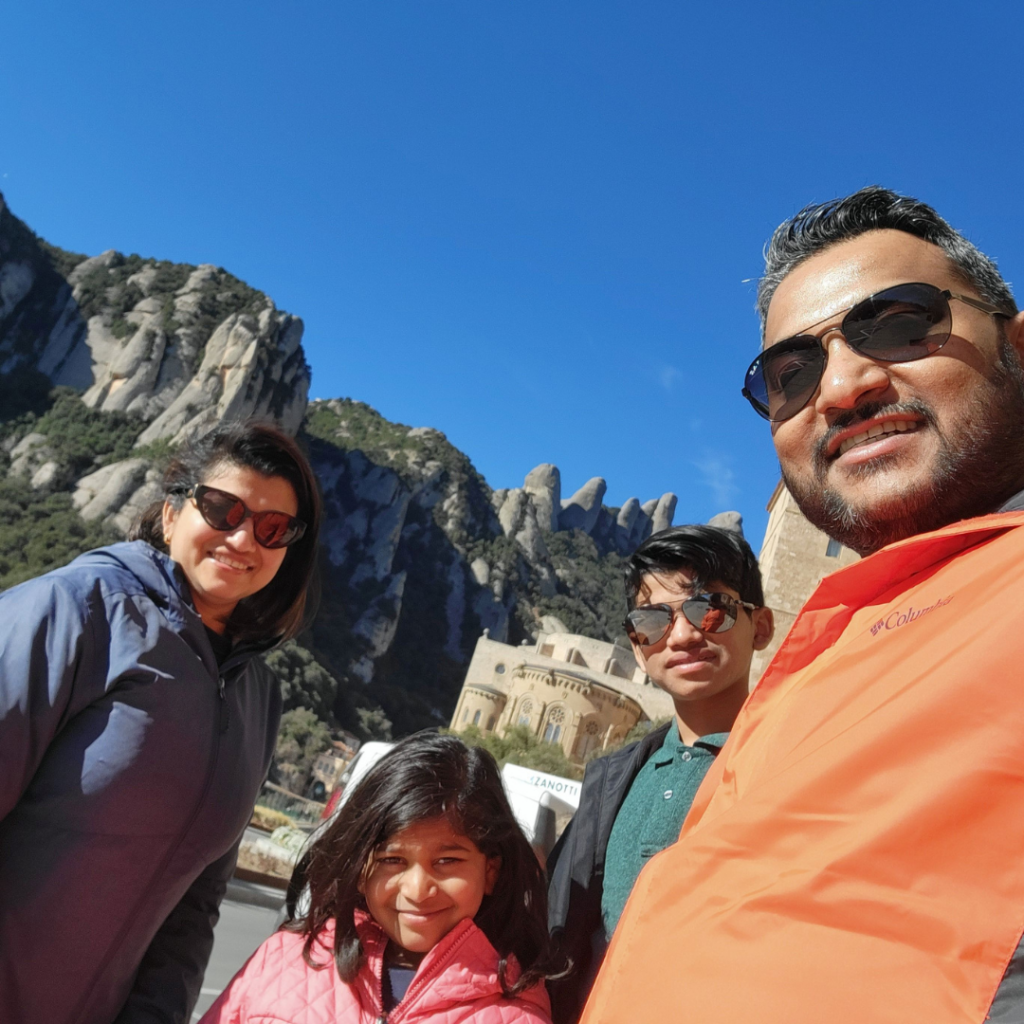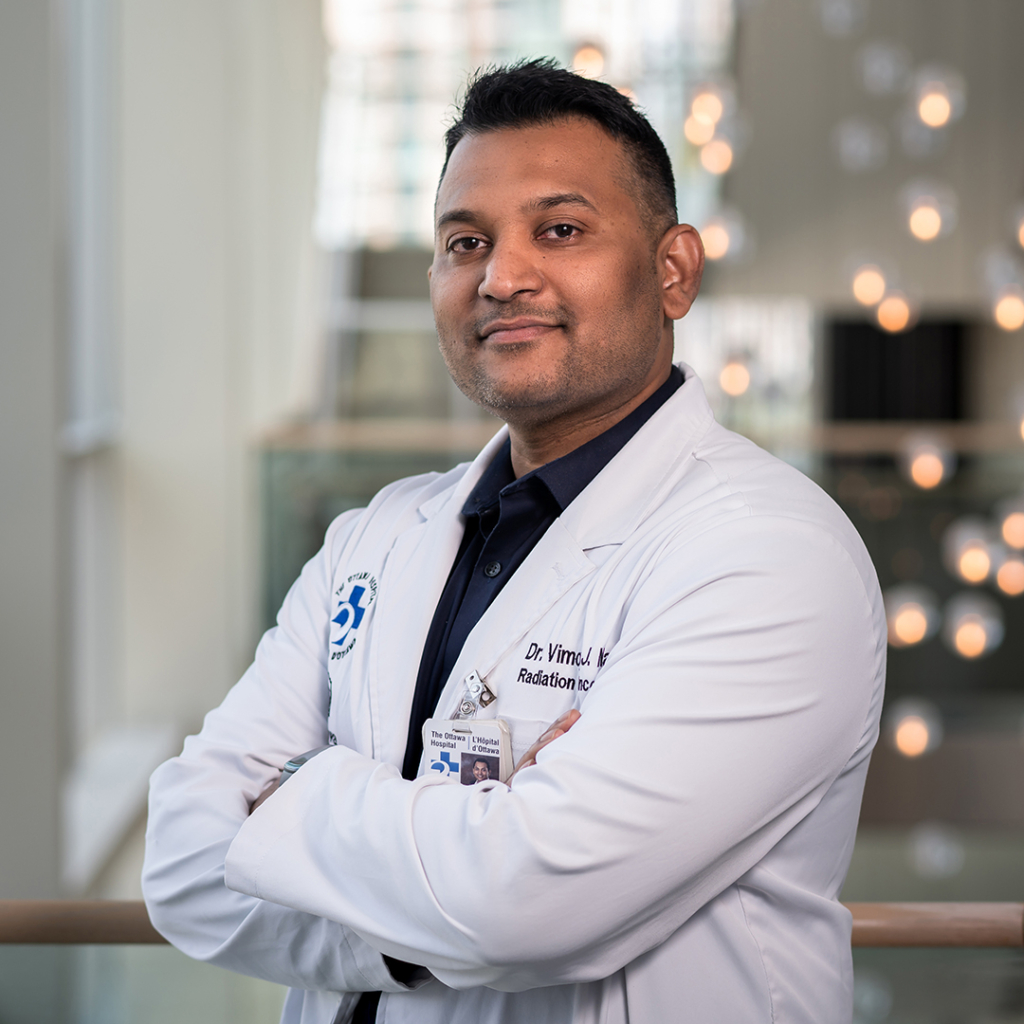
Surgery without surgery — it sounds like a riddle, but it’s what Dr. Vimoj Nair does every day at The Ottawa Hospital. As a radiation oncologist, Dr. Nair specializes in radiosurgery, an extremely precise form of radiation that doesn’t involve a single incision. By using exciting new technology like the CyberKnife and conducting practice-changing research, Dr. Nair is reshaping how certain cancers are treated, and ultimately creating better outcomes for patients at The Ottawa Hospital and beyond.
Keep reading to find out why Dr. Nair chose to pursue medicine and how the field has changed since he first started out.
Q: Can you tell us a bit about your early years?
A: I was born in Kerala, which is a beautiful state in southern India. My dad was an accountant with an American firm, so I started travelling as a baby, and I think all that travelling made me a bit of a global citizen.
I did all my schooling in Kerala, though, and my favourite subjects were math and science. STEM subjects came easily to me — I’m a bit of a geek. At around 15, I got into computers and early coding, and I did a diploma in computer applications. Back in the early ’90s, having a computer was a luxury, and there was no high-speed internet yet, so there was very little information I could get, but it’s part of what made it so fun. Later, I think this early experience with computers brought me to an identity where the intersections of pure medicine and technology could change lives.
Q: When did you decide to pursue medicine and become a doctor?
A: Because of my broad interest in everything STEM, I didn’t know what direction to take. I took math and biology, and I got into software engineering and med school for university, but with everything I had seen growing up, I realized that the best way I could help my fellow human beings in any part of the world was by being a physician.
“I think I went into radiation oncology because it’s the perfect combination of math, physics, and medicine — it mixes everything at the precise right dose.”
— Dr. Nair
Q: How did you wind up at The Ottawa Hospital?
A: I always thought I’d wind up working in the US. After my residency in radiation oncology from Northern India, I completed my neuro-oncology fellowship from the Tata Memorial Hospital in Mumbai — the largest cancer centre in Asia. While I was there, I was selected for the American Brachytherapy Society Fellowship in Texas. The awards ceremony was in Toronto, after which I did my one-month fellowship in Texas. That stop in Canada made me realize I wanted to live here, that this is where I wanted my kids to grow up. I applied for immigration while finishing my residency in India, and I moved here to be the first CyberKnife fellow at The Ottawa Hospital.
Q: How has the field of radiation oncology changed since you started?
A: The same way cell phones today are different from the cell phones of the 1990s, the field of radiation oncology has changed immensely. It’s a field where we’ve had the simultaneous adoption of both hardware and software, so we’ve had huge changes in technology that mean the precision with which we target cancer has gone from centimetres to millimetres and now less than a millimetre. The dosing and accuracy have improved incredibly.
We’ve seen the introduction of radiosurgery, artificial intelligence, and virtual reality. The Ottawa Hospital has been a fast adopter of technology, and we were one of the first centres in the world to develop our own virtual reality–based system for improving the target delineation — or outlining the target — for treatment during cancer radiation therapy.
Q: You worked on Erin Brown’s case; what made her situation so unique?
A: With Erin, we had this brilliant young lady who had an aggressive, rare tumour that was mostly removed surgically before coming to me for radiation. We knew if we did something too focused, it was going to come back at the surgical site. But we also didn’t want to go too wide and cause unnecessary damage to the surrounding normal brain tissue. Picture it like a tree in a lawn: the surgeon plucked out the tree — or removed the tumour — and I had to go after the roots left in the lawn — the lawn being her brain. The art of the science was knowing what to spare. We wanted to protect her memory centres, so she could have a full and happy professional and personal life.
Many years later she did have a recurrence in a different part of her brain, far away from the original site, suggesting cells migrated through the fluid in the brain. As the tumour came back after two rounds of surgeries in this entirely new site, we had to give more radiation to this area to prevent it from growing back.
Giving a second round of radiation to a young brain does create more technical challenges. But with the technology we have in the Radiation Medicine Program at The Ottawa Hospital, and the world-class team with decades of experience, we are able to successfully repeat irradiation to the brain with excellent results sparing her uninvolved memory centres.
I’ve been so happy to see her finish her education, and she became a nurse right here at The Ottawa Hospital.
Q: In your role as a clinician investigator at the Ottawa Hospital Research Institute, what are you currently working on?
A: I’m a broad-spectrum radiation oncologist, so I dabble in many things. Right now, I’m working on a world-first clinical trial for studying the role of the gut microbiome on brain cancer with my collaborator Dr. Terry Ng. Another innovative study was with collaborators Dr. Jean-Philippe Thivierge from the University of Ottawa School of Psychology and Dr. Janos Szanto in radiation physics (now retired) to see what radiation does to brain cells and how we can use it as a painless scalpel in non-cancerous cases. We are also studying various medications that could potentially reduce side effects and improve effectiveness of radiation. All this research is funded by donors or by winning competitive grants.
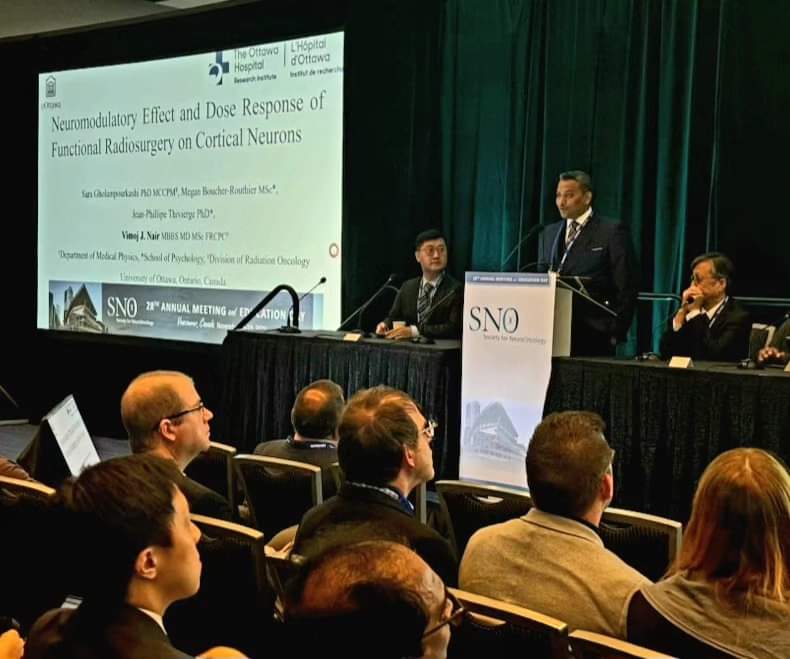
Q: How important is support from the community in advancing your research at The Ottawa Hospital?
A: We are blessed to live in a city where people believe in giving back to the community. When I started as a fellow here, in 2011, I was able to support fundraising for research work using the Cyberknife. Fast forward to today, and the novel research I’m doing on the gut microbiome, or radiation’s effect on the brain, was only possible due to the generosity of our local donors.
Q: Where would we find you when you’re not at work?
A: Spending time with my wife and my two kids. I enjoy learning everything and anything out of my comfort zone. Technology, economics, space tech, med tech, the list goes on. As a family, we all spend a lot of time reading and chatting about these topics. At the same time, we make it a family policy to unplug ourselves from technology and travel to see more of this beautiful blue planet of ours. We love travel, whether it’s within in Canada or roaming all parts of the globe — from hiking the Montserrat mountain in Barcelona to the gruelling climb up the Grouse Mountain in Vancouver, or what people call mother nature’s Stairmaster.
